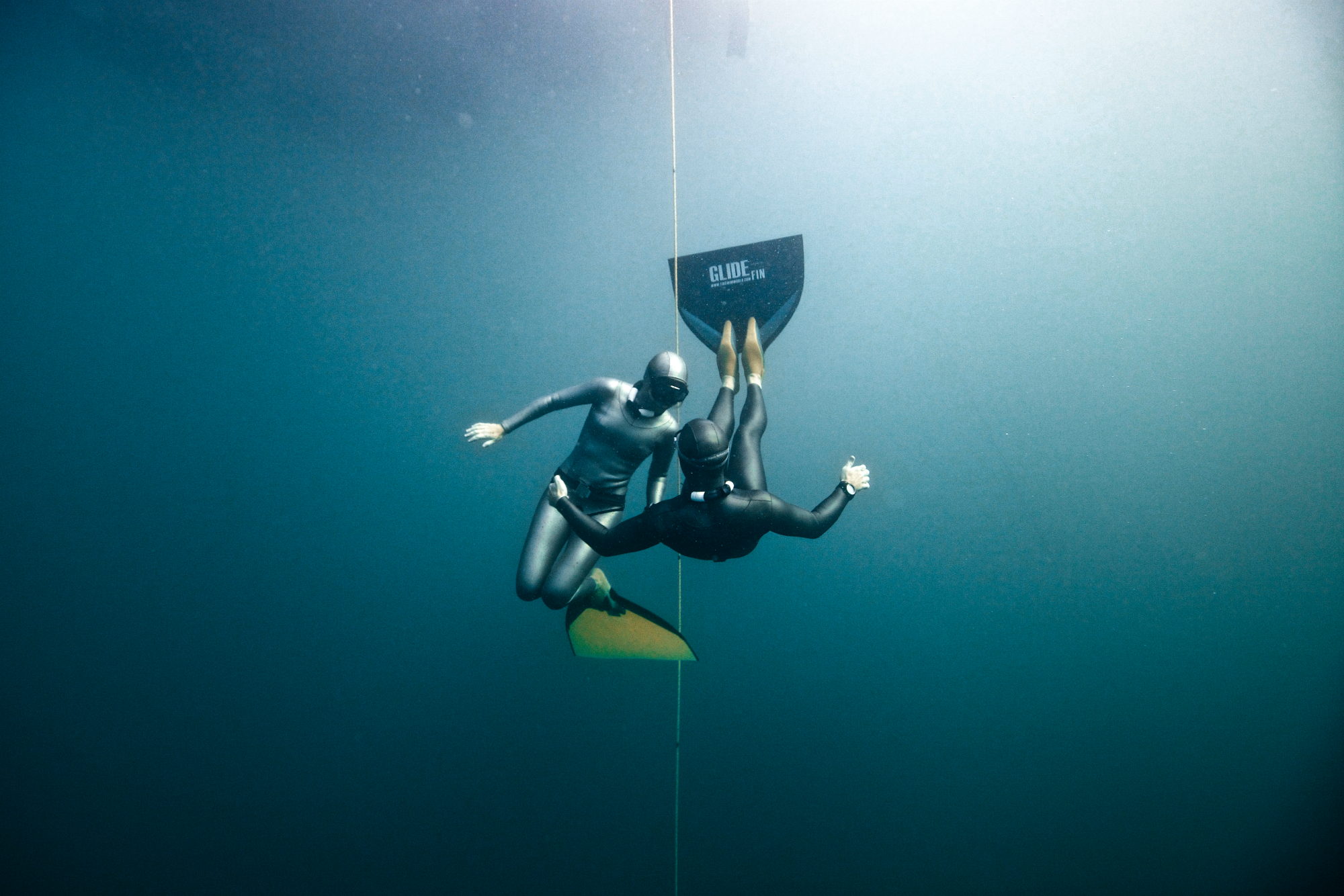Freediving Equipment
Freediving equipment is similar to that used for Scuba. However, over the years a variety of equipment has been designed with the freediver in mind. When choosing equipment, consideration should be given to the environment in which you intend to dive and/or train. The details given below serve to highlight some key equipment which is specific to freediving, rather than other forms of diving.
Wetsuits and Diveskins
As with scuba, wetsuits insultate you from the cold and protect your skin from abrasions and marine wildlife. Neoprene rubber became the standard material for wetsuits in the late 1950s. Tiny sealed bubbles in the material form the insulation. When under pressure ( i.e. at depth), the bubbles compress and reduce the size and effectiveness of your wetsuit. There is a large variety of wetsuits i.e one piece/two pieces, varying thicknesses, different coatings, with orwithout hood. For warm water regions or heated pools, dive skins are an alternative. Generally made from lycra, darylex or polartex, they are neutrally buoyant.
Fins
Fins increase the freediver’s efficiency and mobility. The choice of fin contributes significantly to the performance of the freediver. There are two broad categories of fins:
Bi-fins
In this category, there are two types (i) Full foot pocket (ii) open with heel straps. The full foot pocket version is the most popular as it is believed that they provide more support that the open version and better transference of energy. Freedivers tend to agree that their fins should be between 90 and 110 cms long. The fin blade produces a wave of displaced water that propels the freediver forward. The larger the blade, the larger the wave. Soft, flexible fins are more efficient and less tiring that stiffer blades.
Mono-fins
The monofin was invented by the Russians in 1967 by riveting two traditional rubber fin pockets to a single blade of metal. Modern monofins use fibreglass for the blade.
Fin Keepers
These prevent your foot from being pulled out of the full-pocket fin. Three interconnected rubber straps wrap the foot pocket to your heal. They are useful when your fins do not fit well.
Masks
A face mask provides clear vision undewater. The standard scuba mask typically has too great a volume for a freediver to equalise efficiently. Low volume masks have been designed. The faceplate lens is made of safety or tempered glass to prevent the glass shattering. A nose-pocket is necessary for mask clearing and should be large enough for you to seal your nose for ear equalisation.Some manufacturers offer volume reducing inserts. You can make you own with bits of neoprene foam and silicone. Test the fit of the mask by placing the mask on your face without using the head strap. Inhale and the suction should be strong enough to hold the mask to your face as you shake it side to side.
Weightbelts and Weights
Weights are used to offset the body’s natural tendency to float and the buoyancy of the wetsuit. Freedivers use a belt made from an elastic material which contracts around the waist to compensate for the compressive effect on both the body and the wetsuit of pressure at depth. Lead weights for weight belts come in a variet of shapes and sizes. While square blocks and curved hip weights used by scuba divers are suitable, some freedivers prefer 2lbs ( 0.9 kg) bullet-shaped weights. Weights should always be distributed evenly around the belt. Some freedivers also use special accessory weights, for example neck weights, mostly used for dynamic apnea and ankle weights to help balance the body.
Noseclips and Goggles
Often used at extreme depths or for static training, the noseclip may be worn in conjunction with goggles. It reduces the need to equalise a mask.
Lanyard or Leash
This is a piece of safety equipment when diving down a line. Most competitions require them to be used and will provide exact specifications. In short, a leash/lanyard is a length of cord where one end is attached securely to the freediver (at the waist or wrist) and the other is fitted with a shackle through which the rope passes.

